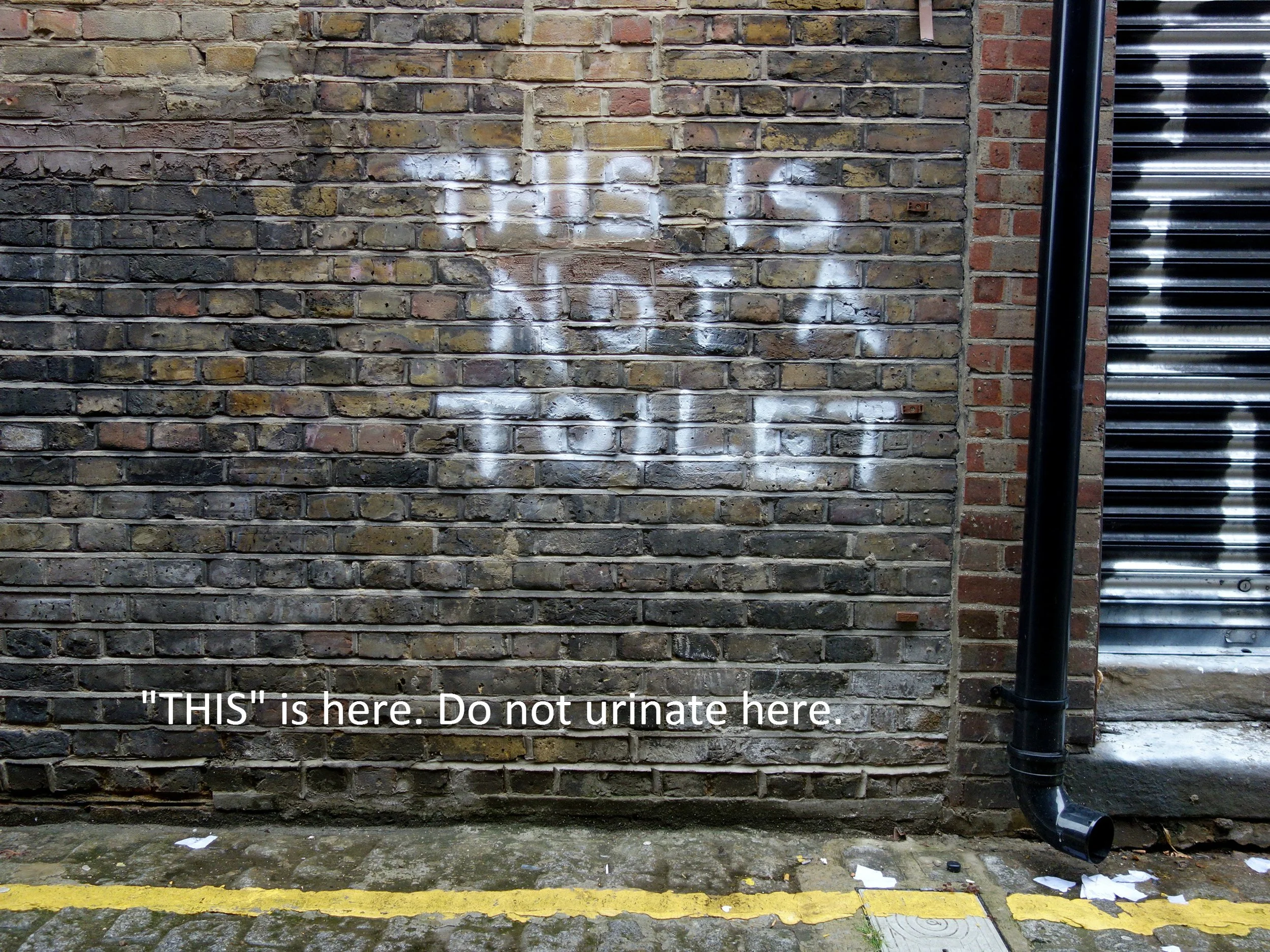No pissing
Public signage only makes sense in its particular location - which is a semiotic property called indexicality. This means that in order to communicate its intended meaning, a sign is necessarily linked to its place, and could not achieve its desired effect anywhere else. Imagine pedestrian crossing signs going up on walls, distance markers in random locations, or cycling signs mixed with parking ones. Of course, many public space explorers and artists have done such experiments, to trigger an unlearning of how we behave in public and how that is determined.
Attempts to regulate pissing in public through signage and built structures are wonderfully diverse in different cultures. These signs are indexes - so they tell us something about their environment. They are also a great hook for realising how every sign, mark, and bit of writing in urban space tells us something about its environment.
One of my favourite overall lessons is that spaces never behave the way they are meant to - despite all the attempts written on and built into their surfaces. The lawscape I mention below refers to how law and space are always inherently connected and mutually constitutive… concept proposed by the brilliant Andreas Philippopoulos-Mihalopoulos… more on this later.

